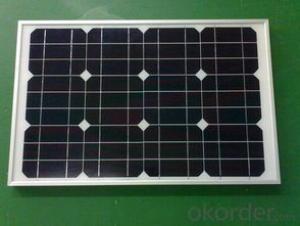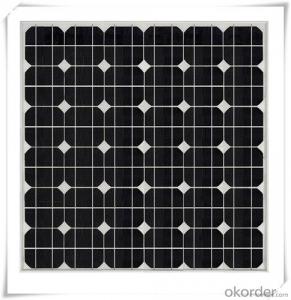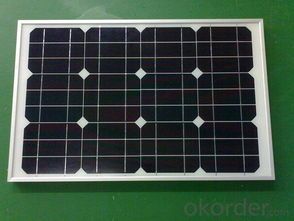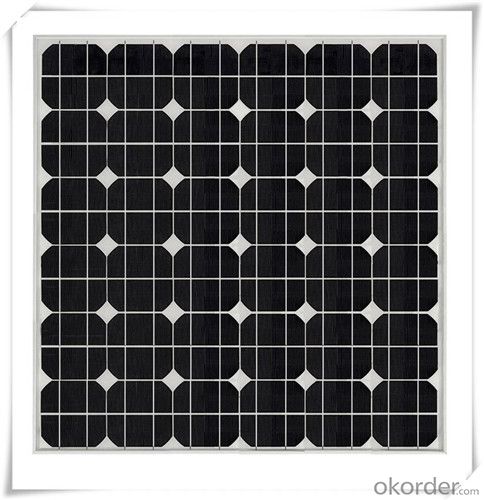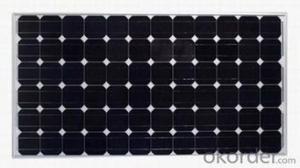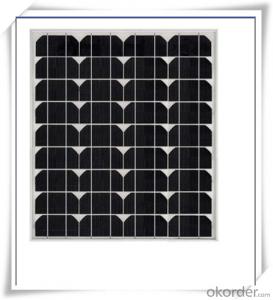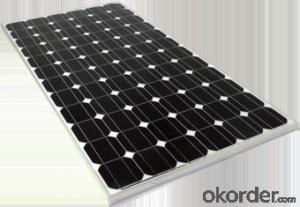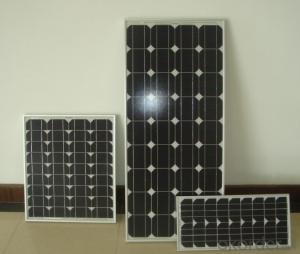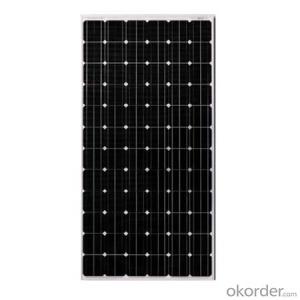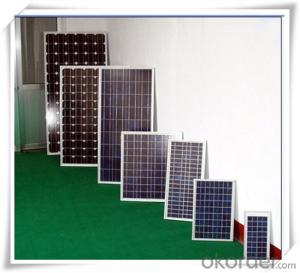Solar Panels Wiki:Factory Sales 1.5w to 180w Monocrystalline Solar Panel CNBM
- Loading Port:
- Qingdao
- Payment Terms:
- TT OR LC
- Min Order Qty:
- 10 set
- Supply Capability:
- 300000 set/month
OKorder Service Pledge
OKorder Financial Service
You Might Also Like
1.5W to 180W Monocrystalline Solar Panel
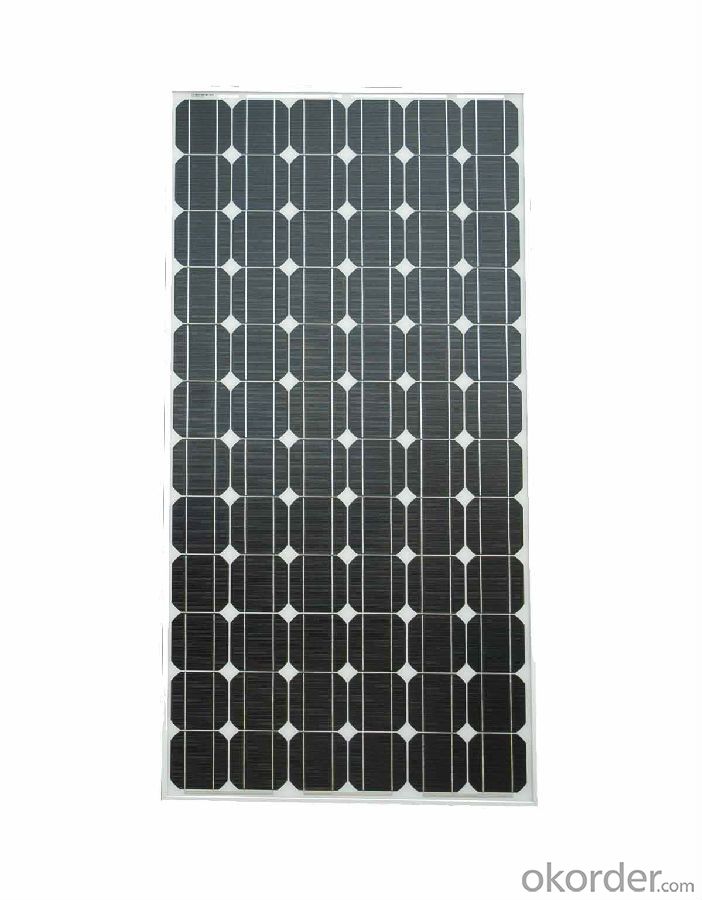
Quick Details
Place of Origin: | China (Mainland) | Brand Name: | CNBM | Model Number: | XRP-156M-250W |
Material: | Monocrystalline Silicon | Size: | 1620x992x40mm | Number of Cells: | 60 |
Max. Power: | 250w | Optimum Operating Voltage (Vmp): | 28.8V | Optimum Operating Current (Imp): | 8.68A |
Open Circuit Voltage (Voc): | 36V | Short Circuit Current (Isc): | 8.87A | Maximum Power at STC (Pmax): | 250W |
Operating Module Temperature: | -40 °C to +85 °C | Maximum System Voltage: | 1000 V DC (IEC) / 600V DC (UL) | Maximum Series Fuse Rating: | 15A |
Packaging & Delivery
Delivery Detail: | two weeks after order confirmation |
Features:
1) High Module conversion efficiency, through superior manufacturing technology
2) 0 to +5W positive tolerance for mainstream products
3) Certified to withstand high wind loads and snow loads
4) Anodized aluminum is for improving corrosion resistance
5) Anti-reflective, Highly transparent, low iron tempered glass
6) Excellent performance under low light environment
Benefit:
25-year performance warrant
10-year Product warranty
Electrical Characteristics:
Item No. | XRM-250W |
Optimum Operating Voltage (Vmp) | 28.8V |
Optimum Operating Current (Imp) | 8.68A |
Open Circuit Voltage (Voc) | 36V |
Short Circuit Current (Isc) | 8.87A |
Maximum Power at STC (Pmax) | 250W |
Cell Efficiency | 17.70% |
Operating Module Temperature | -40 °C to +85 °C |
Maximum System Voltage | 1000 V DC (IEC) / 600V DC (UL) |
Maximum Series Fuse Rating | 15A |
Power Tolerance | 0/+5 % |
STC: lrradiance 1000 W/m2, module temperature 25 °C, AM=1.5;
Best in Class AAA solar simulator (IEC 60904-9) used, power measurement uncertainty is within +/- 3%
Mechanical Characteristics:
No. of Cells | 60(6X10) |
Dimensions | 1640x992x40MM |
Weight | 20.0KGS |
Front | Glass 4.0 mm tempered glass |
Frame | Anodized aluminium alloy |
Temperature Characteristics:
Nominal Operating Cell Temperature (NOCT) | 45±2°C |
Temperature Coefficient of Pmax | -0.44 %/°C |
Temperature Coefficient of Voc | -0.33 %/°C |
Temperature Coefficient of Isc | 0.055 %/°C |
Refer to the Wmp range
Our factory can produce solar panel and solar module from 1.5W-290w (1.5w, 2.5w, 5w, 10w, 20w, 40w, 50w, 60w, 80w, 85w, 125w, 135w, 150w, 165w, 180w), according to customers requirement.
(A). Wmp range: 0.01W-6W, to be sealed with epoxy resin on PCB (printed circuit board), or to be sealed in plastic directly.
(B). Wmp range: 0.01W-15W, to be encapsulated with PET, on PCB (printed circuit board)
(C). Wmp range: 1W-60W, to be encapsulated with PET, on stainless steel, with holes for assembling purpose.
(D). Wmp range: 1W-290W, to be encapsulated with tempered glass, EVA, TPT, together with aluminium frame, junction box and (if necessary)diode and cable.
Refer to the material:
Monocrystalline solar cell or polycrystalline solar cell
Efficiency range 14%-17%, cell size 5/6.
- Q: The Physics club in our school is trying to convince the Board of Ed to install solar panels in our school, and i was just wondering if anyone with some experience or real expertise in solar energy. I need some points about their usefulness some real pros and cons on maintenance, etc. Anything will help. Personally i would be perfectly for the idea, but i heard that the overall cost of installing them is much higher than the cost of the energy saved and government subsidies, but ive only heard about this.
- Cuts Costs over time
- Q: Are solar panels durable?
- Yes, solar panels are durable. They are designed to withstand various weather conditions, including hail, snow, and strong winds. Additionally, most solar panels come with warranties that guarantee their performance for 25 to 30 years, indicating their long-lasting durability.
- Q: Can solar panels be used for heating water?
- Yes, solar panels can be used for heating water. Solar water heating systems utilize the sun's energy to heat water for domestic or commercial use. These systems typically consist of solar collectors, which absorb sunlight and convert it into heat, and a storage tank to store the heated water.
- Q: hi,i have 4 solar panels. I can get 9V 400mA when i wired them parallel. The question is: how can i make a regulator circuit to store power into batteries.
- wire them in series parallel to get 8 volts at 200 mA, and that should charge a 2 volt battery. You may want to put in a series diode to prevent the battery from discharging into the panel when the sun is out. At 200 mA, depending on the battery size, you may not need much control, as that low a current will not overcharge a large battery, like a small auto battery. In fact it will take a very long time to charge it. edit: But do i need to add a regulator? If by that you mean a voltage regulator, no, as a solar panel has a high output resistance, and that will limit the current into the battery. If you mean a charge controller, if the battery is small, you may need a charge contoller to avoid overcharging the battery. But that is not a voltage regulator. .
- Q: I have a solar panel i got for free and I don't know what to do with it. Its kinda big at about 20x 0and it puts our 2 VOC / .23 ISC. I don't know of anything that I could use it for. Its too big to say charge a phone or ipod....any suggestions??
- Makes a great charger for a boat or car battery. I have one about that size that I have mounted on the fishing platform of my boat. The trolling motor battery is always fully charged when I need it.
- Q: Can solar panels be used on boats or marine applications?
- Yes, solar panels can be used on boats and marine applications. They are a sustainable and efficient way to generate electricity, especially in areas with ample sunlight. Solar panels can be easily installed on the deck or roof of a boat, providing power for various onboard systems such as lighting, navigation equipment, and charging batteries. Additionally, solar panels help reduce reliance on fossil fuels and minimize the carbon footprint of marine activities.
- Q: I was looking at thin flexible solar panels as solar panels 500w a option to upgrade a 20w solar panel I have permanently mounted to the roof of a home made camper van.Why I was thinking flexible is at just 2mm thin they can be glued down and being flexible they will follow the contour of the rounded shape of the roof of my camper (boxy standard solar panel spoils the lines a little)Another reason is no glass to brake when traveling on dirt tracks(though I am surprised mine hasn't broken yet after thousands of km on corrugated dirt roads). Finally there is a weight saving at only /3 the weight or less then a standard glass panel.There are different grades of flex PV some of the more expensive ones are very flexible with extremely thin backing at around .5mm The ones I was looking at are cheaper and at around 2mm with a thin flexible aluminum backing.$250 is about the going rate for 20w OKorder job. Below is a pic of a smaller one 60w or so.Has anyone had any experience with them?
- Guide okorder /
- Q: So I want to go completely solar. Do I need the connected solar panels alone for after sundown hours; Do I need something else in order to have energy to run my entire house throughout the night?In other words do solar panels store the energy for after sun-down or do I need other devices to store the energy?
- solar panels don't store energy, they only generate it. If you want to store energy you need a battery bank of some kind to get you through the night and anytime the sun isn't shining. If you have a little extra in the budget you might look at a geothermal system for your home's heating and cooling needs. They're highly efficient systems and you can supplement however you like. Whatever you do, though I hope you have a good building envelope in place already. Solar panels are cool, but if you have a leaky house, you're still not getting the best out of your panels. Do the more mundane stuff first. Insulation, windows, and weather-tight doors.
- Q: I have to show in a project (a model house) how Solar Panels work. In my model I want to show Solar Panels creating electricity to power a T.V but I need to show how the power gets from the Solar Panels to the T.V. A diagram would be really helpful. Please try and make this as simple as possible as I'm only 3, but try and be specific as well!
- A solar panel is a device that collects and converts solar energy into electricity or heat. It transfers energy from the sun into electricity or heat which can be used by (for example) nearby buildings. Solar panels can be made so that the sun's energy excites the atoms in a silicon layer between two protector panels. The atoms split up and the electrons travel down wires into the home for electricity. Solar panels were in use over one hundred years ago for hot water heating in homes. Solar panels can also be made with a specially shaped mirror that concentrates light onto a tube of oil. The oil then heats up, and travels through a vat of water, instantly boiling it. The steam created turns a turbine for power. []
- Q: Can solar panels be used to power a camping trip?
- Yes, solar panels can be used to power a camping trip. They are an excellent source of clean and renewable energy, allowing campers to charge their electronic devices, power lights, refrigerators, and other camping equipment. Solar panels are portable and can be easily set up in a sunny location to harness the sun's energy during the day and store it in batteries for use at night. They provide a sustainable and eco-friendly solution for powering camping adventures.
Send your message to us
Solar Panels Wiki:Factory Sales 1.5w to 180w Monocrystalline Solar Panel CNBM
- Loading Port:
- Qingdao
- Payment Terms:
- TT OR LC
- Min Order Qty:
- 10 set
- Supply Capability:
- 300000 set/month
OKorder Service Pledge
OKorder Financial Service
Similar products
Hot products
Hot Searches
Related keywords
